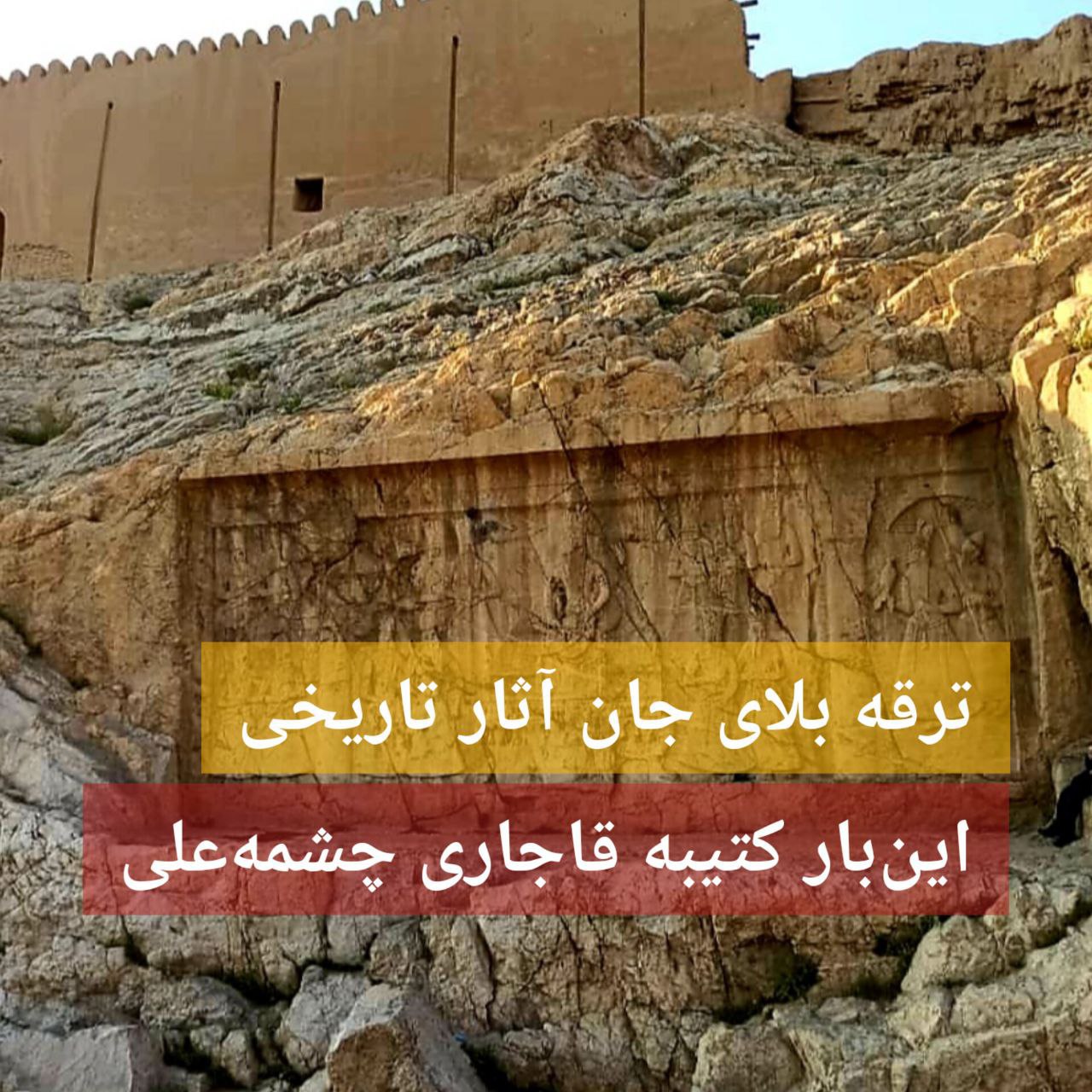Firecrackers are the bane of historical monuments; This time the inscription of Cheshme Ali
#Maryam_Atyabi
The first attack on Cheshme Ali inscription was done in May 1400, at the height of the municipal disputes with cultural heritage for the so-called organization around Cheshme Ali. At that time, some unknown people killed the inscription with hair dye spray and it was never determined who these people were!
Apparently, this work was done by Fatah al-Babi for the second attack, which is the firing of firecrackers in Syria.
Before this, people never had anything to do with Cheshme Ali’s prominent figure. But now the news comes that this time they fell on the life of Fath Ali Shah’s inscription with a firecracker and if they don’t set an example in good work, they have the talent to set a double example in bad work!!!
‼ The interesting point is that it is in front of Cheshme Ali Park and the municipal officers are usually present there. A police kiosk is also located there. At a distance of less than 50 meters, the office of the City Heritage Department is located.
In addition to these defacements of the inscription, add that the wall of Barui Ray above Cheshme Ali has also become a hangout for drug addicts, and they have dug out corners of the wall and built a comfortable place for themselves, and again, no one responsible has anything to do with them.
On the other hand, some historical monuments are usually considered part of urban spaces and access to the walls and bodies of these works is easily possible, but there are no serious prohibitive laws in this field. There is no inter-device interaction, if there was, this would not be the day of Cheshme Ali and its barrow and hill!!!
Old photos of the springs leave nothing but longing in the heart. A natural-historical work that neither the passage of the subway dried up nor the construction around it. It is surrounded by greenery and people are happily sitting around it. Their carpets are washed there during Eid and they console the summer heat with a bath in it.
But now its most important guardian, i.e. cultural heritage, does not take any special action for it, neither archaeological exploration, nor proper restoration, nor protection. In the meantime, the inscription is the worst. The municipality is also looking for its own agenda, how much of the area around the fountain it can take to implement its desired plan. None of them are willing to take help from the police force to protect the area.
It is necessary to remember these points that Ray’s rampart is a defensive wall that surrounded the city during the Parthian rule, and now only about 3 kilometers of the remains of this wall, part of which is located on the Cheshme Ali rock.
On the other hand, they say that Cheshme Ali is 8,000 years old, and archaeological excavations confirm its great age. Fath Ali Shah Qajar, who used to go to Cheshme Ali more for sightseeing, in 1248 A.H. ordered to carve his portrait on the top of Cheshme Ali with a group of courtiers.
According to the heritage report; Syrian Wednesdays are associated with bitter scenes in historical monuments. Despite the warnings, every year a small number of people who break the norms throw firecrackers at the walls of historical monuments on the last Wednesday night of the year.
They did not realize that throwing firecrackers leads to the destruction of historical buildings, such as throwing bricks or catching fire, or at the very least, the remains of the firecracker explosion must be cleaned, and all this means irreparable material and non-material damage.
The lack of necessary training in textbooks and mass communication tools, the lack of cameras and security forces, the lack of cooperation between the devices and the lack of preventive laws are other main reasons for such incidents.
https://tinyurl.com/2laktey3
instagram.com/miras_bashi
@mirasbashi
This post is written by maryamatyabi
